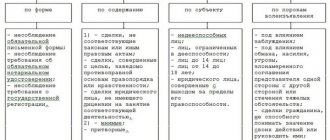Apartments with attics are a fairly common architectural solution in Western countries. However, in Russia, as well as throughout the entire former USSR, attics in multi-apartment residential buildings are rare. This is due to the peculiarities of standard construction, as well as outdated building codes, many of which are still in force today.
However, current legislation still provides residents of the top floors of apartment buildings with certain privileges. So, they retain the privatization of the attic.
Is it possible to register ownership of the attic space above your apartment?
In accordance with current legislation, an attic should be understood as a room that is located between the roof structures. It has been established that the owner of the housing located underneath can connect and reclaim the attic space.
It should be noted that a citizen can use the redesigned and reconstructed attic both for residential purposes and for carrying out commercial activities there, including renting it out.
Privatization of an attic in itself is a lengthy, labor-intensive and financially expensive procedure, but the opportunity to significantly expand your living space pays for all the expenses that arise.
Conditions
The following conditions are established by law for registering ownership of an attic space:
- Possibility of connection only to the apartment on the top floor. Despite the fact that the attic is considered the property of all residents, in fact only residents of the top floors can use it after the privatization procedure.
- The apartment must be registered as a property. Only the owners of the apartments located underneath can privatize the attic space. If the housing is municipal, then this option is not available. In order to register ownership of the attic, residents of social rented apartments must first privatize their housing. Simultaneous privatization of an apartment and an attic is impossible.
- Consent of all residents of the house. The Housing Code of the Russian Federation establishes the concept of “common property”. This includes basements, attics, elevators, staircases, and so on. Accordingly, all common property belongs to all owners of apartments in a particular building. This means that the alienation of part of the common property is possible only if there is the consent of all owners. Thus, it will not be possible to privatize an unused attic without notifying the neighbors and their consent to this procedure.
- Lack of important utilities. The attic is one of those places in the house where important utility nodes can be located, which ensure an uninterrupted supply of utilities to the residents of the house. If in that part of the attic space that one of the owners of an apartment in an apartment building decided to privatize, there are utility connections, then registering it for individual use is impossible.
It is also useful to read: How to transfer premises from residential to non-residential
Coordination of the attic, joining the attic with registration of ownership of the premises.
If, during the voting of the meeting, it was possible to collect 100% of the votes (quite rare cases) in favor of the alienation of part of the common property with the reconstruction of the building and the reduction of the area of the OKS (capital construction facility), then the procedure will be doubly complicated than the previous one, because reconstruction requires obtaining permission from Mosgosstroynadzor and the issue is being considered from amending the PZZ in terms of going through the procedure for changing the purpose of providing a land plot in the lease agreement from “operation” to “for the design and construction (reconstruction) of capital construction projects” in accordance with the Government Resolution Moscow dated March 28, 2017 No. 120-PP “On approval of land use and development rules for the city of Moscow” in the current version. Initiate an issue and agree on additional issues. An agreement to the lease agreement is required from the Moscow City Property Department.
The following procedure, briefly and briefly, looks like this:
- obtaining the cherished consent of 100% of the owners;
- development of design and technical documentation with the necessary examinations and approvals;
- Carrying out the necessary engineering surveys and inspections of the structure of a house, building, structure;
- obtaining permission for reconstruction by an authorized person on behalf of all owners, HOAs and/or housing cooperatives. The procedure is long, complex and multi-stage;
- performance of work with receipt of all necessary closing documents and the act of putting the facility into operation;
- making changes to BTI documents and preparing a technical plan with its subsequent submission to Rosreestr;
- receiving a new USRN extract with an increased area of your already two-story penthouse or premises.
Reasons for the ban
Privatization of an attic space in an apartment building is impossible due to non-compliance with the conditions listed above.
In addition, the reasons for a negative decision of a government body on this issue may include:
- non-compliance with legal requirements during the privatization process;
- lack of an established reconstruction project;
- the technical impossibility of reconstructing the attic without a negative impact on the structural characteristics of the residential building.
Reference! The applicant may appeal the decision to deny the right to privatization in court.
Is it possible to attach a technical floor to an apartment?
It is not prohibited to connect an attic to an apartment in accordance with current legislation. It is necessary to register the technical floor as personal property and transfer it from non-residential to residential.
It is necessary to coordinate the redevelopment of the apartment with the relevant authorities. Attaching the attic to the living space allows you to turn an ordinary apartment located on the top floor into a two-level apartment.
Due to this, the living space significantly expands and the degree of comfort increases.
Dear readers! To solve your problem right now, get a free consultation
— contact the duty lawyer in the online chat on the right or call: +7 Moscow and region.
+7 St. Petersburg and region. 8 Other regions of the Russian Federation You will not need to waste your time and nerves
- an experienced lawyer will take care of all your problems!
How to privatize
As noted above, privatization of an attic space is a very difficult procedure. In this regard, it is important to carefully consider your actions, since failure to comply with one or another condition for registration of ownership may lead to a decision to refuse privatization.
The first step that should be taken is to obtain the consent of all residents to transfer the attic and carry out its reconstruction. To do this, a general meeting should be organized. It has been established that owners of residential premises must be notified of the meeting at least 10 days in advance.
It should be noted that if the house is managed by TSN, then the meeting should be organized with notification of its executive bodies. If management occurs through the management company, with which the owners have concluded a corresponding agreement, then notification of its representatives at this stage is not mandatory.
Having ensured the gathering of all residents of the house, it is necessary to obtain their consent to carry out reconstruction and privatization. In other words, a vote must take place with the drawing up of an appropriate protocol. Privatization requires the consent of all apartment owners in the building. If there are objections, then further actions are pointless without resolving them.
Further, if the consent of all owners is obtained, it is necessary to obtain permission to reconstruct the attic space. It is issued by representatives of organizations serving the housing stock, including management companies. In addition, permits are required from all services that maintain and are responsible for the condition of utility networks located in the attic.
The next step is to order a reconstruction project . Design work of this type can only be carried out by specialized bureaus and construction organizations. An important condition for carrying out this activity is membership in an SRO and the availability of an appropriate permit issued by this association.
The project must take into account all legal requirements. In addition, deviations from it are unacceptable at any stage of work.
What documents to prepare
So, before submitting an application for approval of the connection, you need to take care of generating a complete set of documents, which includes:
- an act of the general meeting of residents with their signatures confirming consent to the reconstruction and privatization of residential premises;
- minutes of the general meeting of residents;
- permits for reconstruction issued by organizations providing technical maintenance of utility networks;
- a copy of the technical passport for the house;
- floor explication of the house;
- title documents for residential premises;
- technical passport of the residential premises.
Important! This list is not exhaustive. Depending on the specific situation, other documents may be required.
Where to contact
The applicant must contact the local administration with a complete package of documents . This body, represented by specialists from the urban planning department, will make the appropriate decision. If it is unsatisfactory, then the citizen has the right to protect his interests in court.
When permission from the government authority has been received, you can proceed directly to construction and installation work. After completion of the work, a special state commission will carry out commissioning and check the compliance of the work results with what is specified in the project documentation. The applicant will receive a new technical passport.
After receiving your passport, you must contact Rosreestr, where the resulting right will be registered in the prescribed manner. It is from the moment of registration with a government agency, confirmed by an entry in the Unified State Register of Real Estate, that the new owner will be able to dispose of the attic space at his own discretion.
Deadlines
As a rule, the application is processed quite quickly - within one month. However, it should be taken into account that it takes quite a long period of time to coordinate the reconstruction with various organizations servicing the apartment building.
In addition, it is impossible to predict in advance how long construction and installation work will take. Thus, it is almost impossible to name the exact time frame within which you can meet when decorating an attic . The approximate period is about six months from the moment of holding the meeting of residents until the registration of the right in Rosreestr.
Cost of the procedure
It has been established that in order to legalize an attic in an apartment building, a citizen does not pay a fee. However, it should be taken into account that the costs during the registration process can be quite high. So, they, first of all, relate to construction and installation work. In addition, a considerable amount will be required for the development of the project and other technical documentation.
Attention! It is difficult to name the total amount of these expenses, since it depends on the location, technical properties of the attic, region, type, number of floors of the house and many other factors. However, it should be borne in mind that in today’s realities this amount can amount to several hundred thousand rubles.
Bases and design options
So, you can fully use the attic space only after registering it as a property. Most often, the attic is not privatized, i.e. does not belong to a private person. By privatizing the attic, the owner receives the right to dispose, own and use it at his own discretion.
Let's consider several options for privatizing the attic.
- Option No. 1 – privatization with the help of a management company. If there are no grounds that prevent the privatization of the attic, for example, there are no communications in it, the attic is not in emergency condition, you need to contact the management company. As a rule, after the house is put into operation, the attic remains with the management company; it is often used as a technical room. Accordingly, if the attic is assigned to the management company, then it is she who has the right to give permission for privatization
- Option No. 2 – general agreement. If it turns out that the management company did not reserve the right to use the attic, then the latter is common property, i.e. it is owned equally by all homeowners. In this case, you will have to obtain consent from all apartment owners, because and they have the right to use the attic. If there is written consent from all residents of the house, the process of privatization of the attic can be started.
Of course, to obtain ownership of the attic, a simple agreement of all residents of the house is not enough. The whole procedure goes through several stages:
- First of all, you need to make sure that the attic does not belong to someone else.
- Hold a meeting of homeowners. At the meeting, consider the issue of privatization, vote and formalize the consent of all owners in writing. This can be done by attaching to the minutes of the meeting a table with the names of all apartment owners with a signature in the “agree” or “disagree” column.
- Collect documents for privatization of the attic.
- The application for privatization of the attic, along with a package of documents, must be submitted to the management company, as well as to the department of the city administration, which deals with such issues;
- Based on the results, a response will be given to your application. If the decision is positive, you need to obtain a certificate of ownership from Rosreestr.
As for documents, it will take time to receive some of them, because... you will have to contact different authorities. Here is an approximate minimum list of documents that need to be collected to privatize an attic:
- a copy of your own passport;
- document providing the basis for ownership of the apartment (deed of gift, certificate of ownership, etc.);
- documents for the apartment: cadastral plan, technical plan;
- consent from the residents of the house;
- certificate of safe use of the attic space (issued at the territorial office of Rospotrebnadzor);
- certificate of technical safety of the premises (issued by the Ministry of Emergency Situations, often a purely formal procedure);
- plan of an apartment combined with an attic (if such a combination is planned and possible, since, of course, the attic space is not always located directly above the apartment of the potential owner);
- permission from the gas inspectorate as confirmation that gas communications will be accessible to utilities.
You may have to obtain other documents during the registration process. For example, if the attic is directly connected to the apartment using a staircase, then this can be considered as a redevelopment, which means that a redevelopment project will be required, and permission from the housing estate will be required.
The entire package of documents is submitted to the Housing Inspectorate for review. Even if you have all the certificates on hand, this does not guarantee a 100% probability of the attic becoming property. If the housing estate makes a positive conclusion, then in order to finalize the ownership of the attic, you need to contact the city administration and Rosreestr, which will secure ownership by issuing a certificate.
The attic can be rented (this option, of course, is the simplest in terms of design, but not the most practical, since the lease is issued for a certain period). In this case, it is not necessary to obtain consent from all owners; it is enough to contact the municipal company for the appropriate permission.
How to rent an attic in an apartment building and non-residential building?
An attic in a non-residential building or apartment building can be rented for living or doing business. To do this, you need to contact the HOA or Management Company. A community meeting is organized. Residents decide to rent out the attic space and determine the amount of the monthly payment.
All changes that will be carried out on the technical floor are agreed upon. Next, a lease agreement is concluded and registered in accordance with the procedure established by law. Then the project is developed and approved, repair work is carried out and adjustments are made to the technical documentation.
It is important to reflect all changes in the lease agreement and register.
Legal redevelopment
The Supreme Court of the Russian Federation analyzed the case materials and came to the conclusion that previous courts made decisions with significant violations.
The owners of premises in an apartment building, on the right of common shared ownership, own the common property of the house (Part 1, Article 36 of the Housing Code of the Russian Federation). The general property of apartment buildings includes technical floors and attics.
It is possible to reduce the composition of common property only by obtaining the consent of all owners of apartment buildings, and only through reconstruction (Part 3 of Article 36 of the Housing Code of the Russian Federation).
If it is not possible to reconstruct an apartment without adding part of the common property to it, all owners of the apartment building premises must agree to such reconstruction (Part 2 of Article 40 of the Housing Code of the Russian Federation).
⅔ votes from the total number of votes, a decision can be made on the reconstruction of an apartment building only if the reconstruction does not reduce the size of the common property (Part 1 of Article 46 of the Housing Code of the Russian Federation).
The Supreme Court of the Russian Federation clarified that in this case, the apartment owners needed to get 100% of the votes, because the reconstruction reduced the composition of the common property of the apartment building. There is a nuance: the decision of the OSS must be made unanimously by all owners or unanimously by all owners participating in the meeting, with written consent for reconstruction being obtained from the owners who did not participate in the OSS.
The owners of the disputed apartment did not receive the consent of 100% of the owners of the premises in this apartment building. In addition, the Supreme Court of the Russian Federation found that at the general meeting of owners it was not specified that the reconstruction would lead to the annexation of part of the common property to the apartment and its reduction. The apartment owners carried out reconstruction and reduced the composition of the common property illegally.
How to eliminate obstacles to the use of common property of apartment buildings









